Everything to Know About the Aaron Hernandez Case Before the Netflix Documentary
Netflix will release the Killer Inside: The Mind of Aaron Hernandez on Wednesday.
The 3-part documentary film chronicles the life, career, trial, and suicide of former New England Patriots football player, Aaron Hernandez.
Here is a timeline of the events involved.
The story of the arrest, trial, conviction, and suicide of former New England Patriots star Aaron Hernandez will arrive—sensationally, and with an airport thriller’s title—on Netflix this Wednesday: Killer Inside: The Mind of Aaron Hernandez.
Five years, two separate trials—a conviction and an acquittal—and then a jail suicide abound with rumors of alleged homosexuality and speculation of neurological damage due to concussions; it’s no surprise then that Netflix would turn the Hernandez saga into an extravagant documentary, one surely meant to stand as this year’s Fyre Festival stand-in. The man who had it all—money, talent, fame—goes and throws it all away.
Here is a timeline of every major event in the Aaron Hernandez story. Much reporting comes from The Boston Globe.
The Killing of Odin Lloyd
2012
July 16
The story begins in South End, Florida, early morning, with a drive-by shooting that kills two men, Daniel de Abreu and Safiro Furtado. The night before, Hernandez is seen at the Cure nightclub with Abreu, who spills a drink on the NFL star.
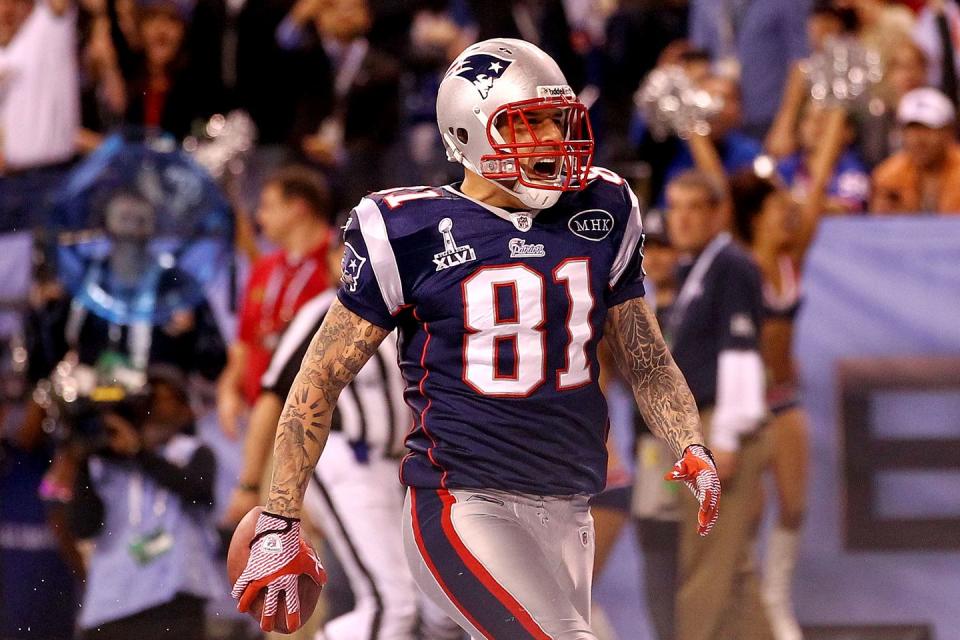
2013
February
During a trip to West Palm Beach, Florida, a friend of Hernandez, Alexander Bradley, is shot in the face. Bradley will later testify that the shooting was perpetrated by Hernandez in an attempt to silence Bradley on the 2012 killings, for which Hernandez is later charged.
June
Club security footage captures Hernandez and his sister’s fiancé, Odin Lloyd, apparently squabbling. The next day, Hernandez sends a text message to a friend out of state, asking him to come to Massachusetts and saying, “You can’t trust anyone anymore.”
Video footage later that night captures Hernandez at home in Massachusetts carrying a handgun. He leaves the house with two men in a Nissan Altima. They pick up Lloyd who then sends a text to his sister, saying “NFL” and “Just so you know.” These are his last texts. Hernandez then arrives home and is seen entering his basement holding what appears to be a gun.
In the morning, Lloyd’s body is found by a jogger in an industrial park.
In the coming days, police search Hernandez’s home. They also find a .22 caliber handgun by a nearby street. (Prosecutors later claim that Hernandez’s friends, Carlos Ortiz and Ernest Wallace, both identified with him that night, handled a .22. Hernandez is believed to have handled a .45, the casings of which were found near the body. The .45 is never recovered.)
A week later, Hernandez is arrested at home. He is charged with first-degree murder and five weapons charges. Ortiz and Wallace are later arrested as well.
July
Ortiz tells investigators that Hernandez told Lloyd during the drive that he was “chilling” with people Hernandez didn’t like. Ortiz says Hernandez got out of the car with Wallace and Lloyd. Ortiz then heard gunshots before Hernandez and Wallace returned to the car.
Much of the prosecution’s case will be based on Ortiz’s statements.
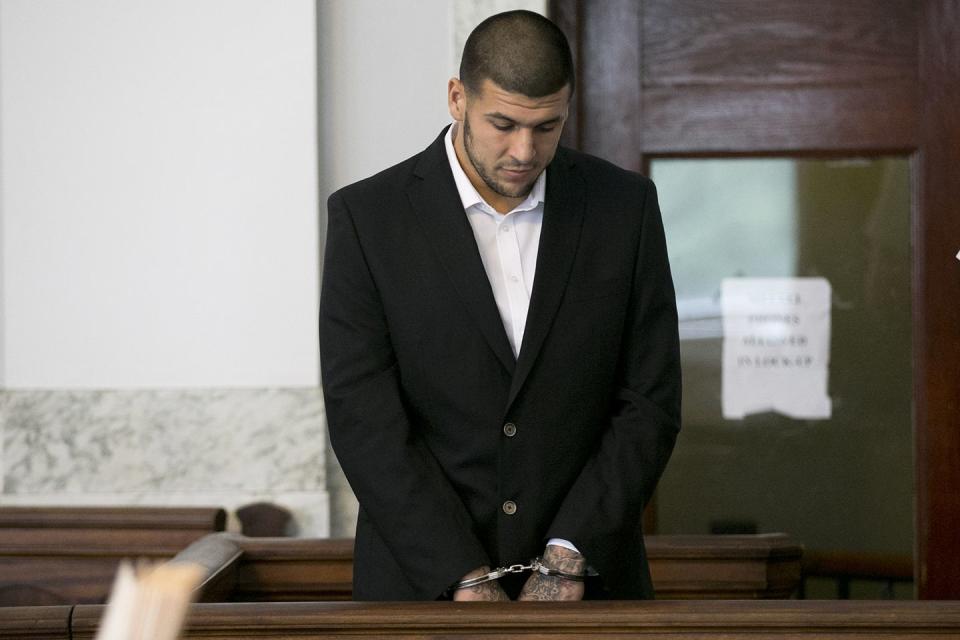
September
Hernandez is arraigned and pleads not guilty to all six charges. A grand jury indicts Hernandez’s fiancé, Shayann Jenkins, for allegedly removing evidence from their home.
2014
May
Hernandez is indicted on two counts of first-degree murder for the 2012 killings of Abreu and Furtado. He pleads not guilty. Prosecutors in the Lloyd case believe Hernandez killed Lloyd, because he thought Lloyd possessed information linking Hernandez to the 2012 killings.
2015
January-April
The Lloyd trial begins. The prosecution, lead by Bristol Assistant District Attorney Patrick Bomberg, claims Hernandez orchestrated, participated, and covered up the killing of Lloyd. The defense, lead by Michael Fee, argues that Lloyd was Hernandez’s friend, that Hernandez would never risk his career in the NFL, that he was about to get married; “Aaron was planning his future, not a murder.”
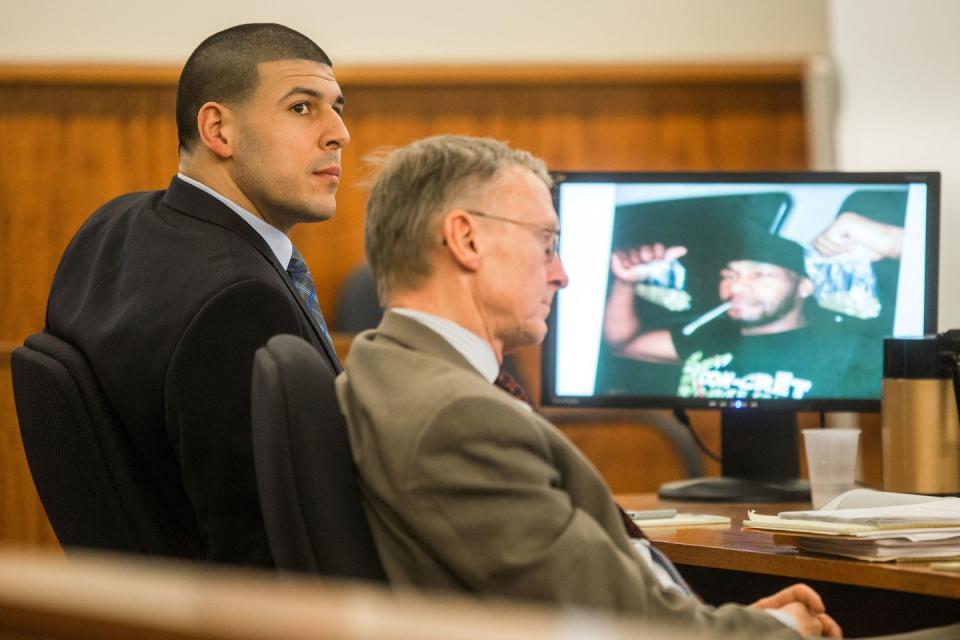
The prosecution presents physical evidence, including footprints at the crime scene that match Hernandez’s Nike Air Jordans and Hernandez’s DNA on .45 shell casings in Hernandez’s car. They remind jurors that they don’t need to prove Hernandez pulled the trigger to secure a murder conviction; they can show that he “knowingly participated” and intended to follow through with the killing. After calling 131 witnesses over 39 days, the prosecution rests its case.
The defense calls three witnesses and argues that DNA could have ended up on the shell casings even if Hernandez never handled them.
In April, Hernandez is found guilty of first-degree murder as well as five weapons charges.
The Killing of Daniel de Abreu and Safiro Furtado
2017
February-April
The trial for the 2012 killings begins. The prosecution claims Hernandez, riding in a car with Bradley, who later claimed that Hernandez also shot at him, pulled up next to a BMW carrying Abreu and Furtado and fired five times at the vehicle. The defense, led by Jose Baez, claims that Bradley, the prosecution’s star witness, was the one who fired the shots. Much of the Hernandez defense involves discrediting Bradley’s account of the night, showing Bradley to be a convicted felon and alleged drug dealer. Baez also questions eye-witness accounts of the shooting; some claimed that Bradley’s passenger “look[ed] like a female.”
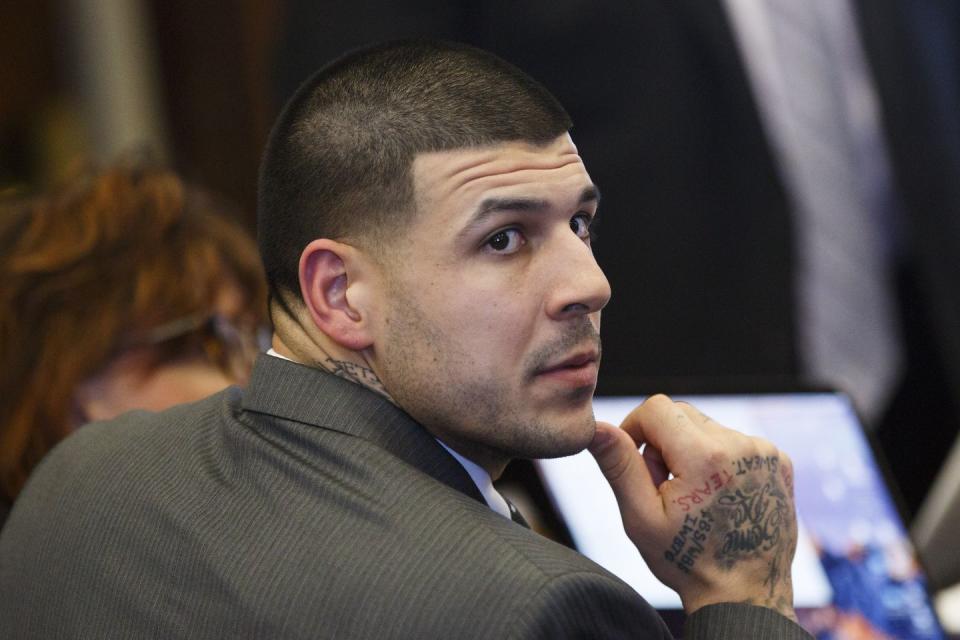
Hernandez is acquitted of all charges.
The Suicide
April
In an interview on K&C (Kirk & Callahan, a morning radio show in Boston), Boston journalist Michelle McPhee says Hernandez killed Lloyd because he caught Hernandez in a “compromising position” with another man.
Two days later, early morning, Hernandez is found dead in his prison cell. He is naked and has been hanged with a bed sheet. In his cell are three hand-written notes.
McPhee claims the notes were intended for Hernadez’s wife, his daughter, and his “prison boyfriend.” (The first two claims are later verified. The third recipient remains disputed.) McPhee also suggests that knowledge of an alleged homosexual relationship between Hernandez and a former high school classmate was believed by investigators to be the motive of the Lloyd killing.
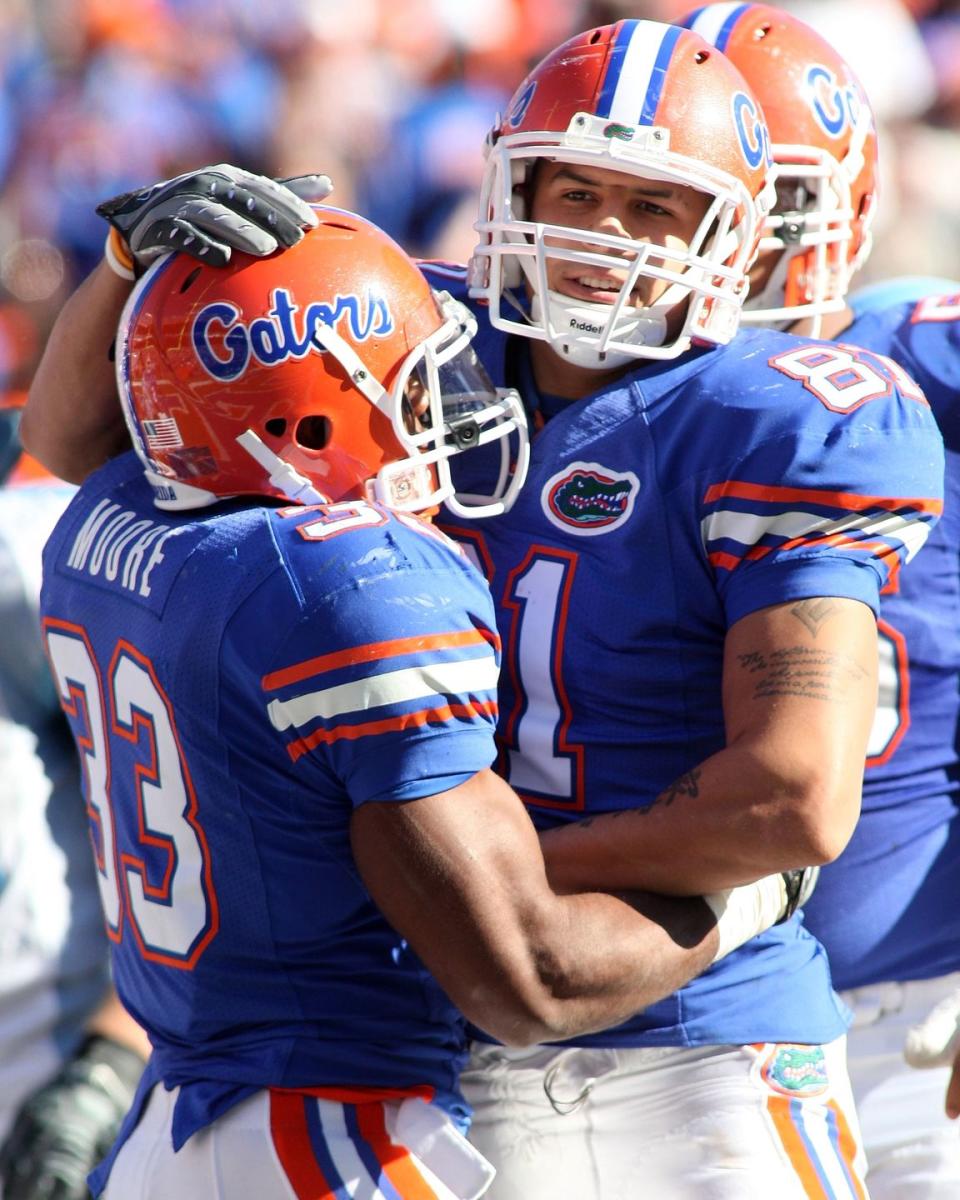
May
Department of Corrections releases a 132-page report saying Hernandez gave little indication that he was suicidal. The report also mentioned that Hernandez’s homosexuality had been discussed by inmates prior to his suicide.
Director Geno McDermott’s Netflix documentary will act as an expansion of an earlier documentary, which highlighted many of the above events. McDermott's new feature, however, will focus on later developments in the case, particularly Hernandez's believed homosexuality.
Featuring new interviews with Hernandez's high school teammates, the documentary will argue that much of Hernandez's behavior was motivated by his apparent need to hide his sexuality. The documentary will also look at Hernandez's home life and upbringing.
Killer Inside hits Netflix tomorrow.
You Might Also Like

